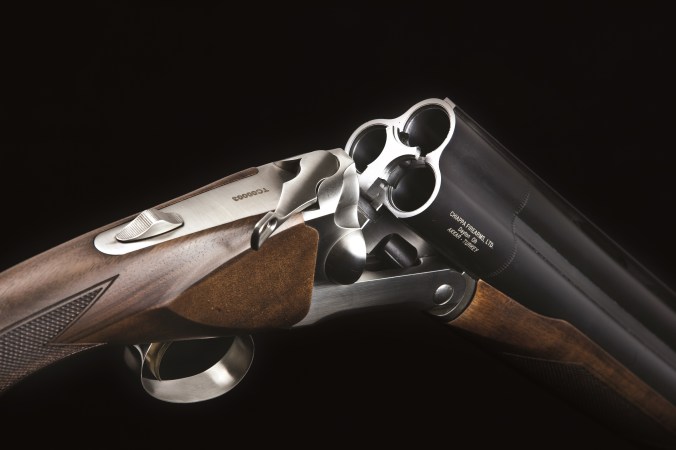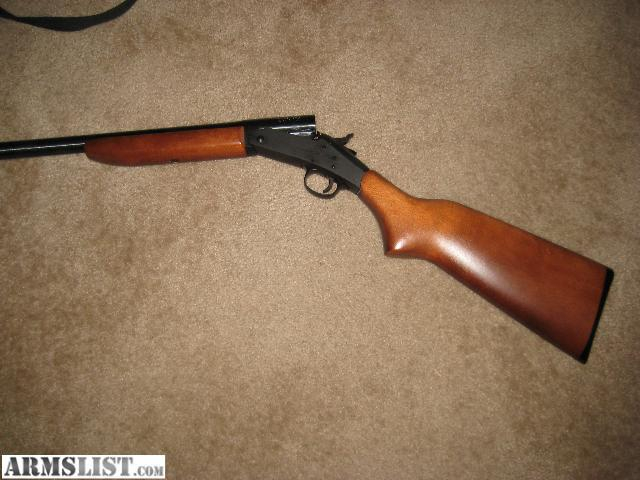I have some reluctance in approaching this subject because there is a lot of controversy around it, and some folks will take offense just at talking about the subject. However, I am a retired Infantry Soldier I was also a Law Enforcement Officer for a number of years, and I was raised with firearms so I know a bit about them.
I want to take a moment to talk about firearms for the Homesteader. I will not address whether or not you should HAVE a firearm on your homestead. What I could give you is my opinion and we both have one of those. Think about it, do whatever research you need to, and then decide for yourself.
One thing that amazes me is the fact that so many people seem to believe knowledge of a subject is intrinsically evil. Why? When did ignorance become virtue? So you do not like firearms and think they are bad. You find one leaned against a tree. Is it safe? What kind is it? Is it even real? Where is the safety? How do you unload it and make it safe? Even if you have no intention of ever owning a firearm, let me suggest to you that learning about them could be a very good thing.
For the sake of this post, we are going to assume you are looking at purchasing the necessary firearms for your home. We will also assume that what you know about firearms could be written on the back of a matchbook with a big crayon.
First question: what do you see yourself doing with a firearm? Is it for hunting, defense from predators, defense from people, all of the above, or just because you want one?
Some, not me, tend to approach the subject along these lines. For hunting and protection from predators, you need:
A fairly large caliber rifle for deer; a varmint rifle with a small caliber with a lot of power behind it; a twenty-two caliber because who does not need a twenty-two; and a shotgun.
For home protection, you need to break the bank buying various pistols, revolvers, short rifles, fake machine pistols, defense modified shotguns, and specially manufactured high speed low drag, multi-colored do-hickies to hang off your thing-a-ma-bobs.

If you cannot see it the caption reads “I think I won.” Thank you Mr. Gaham Willson
So here’s me. You want to fill all the needs we spoke of above. You do not want to devote your life and your fortune to the care and feeding of an assortment of what are essentially high-tech rock throwers. As the kids say, “I feel ya man.” (Do they still say that?)
Shotgun.

The Hallmark Greeting of Firearm, when you care enough to send the very best.
That’s my answer. The venerable, multi-function scatter gun. If you want a firearm that, using assorted ammunition readily available in any sporting goods store and most Wal Marts, and that can efficiently and effectively take anything from a Quail to an Elephant, you want a shotgun.
Let me clarify that. Before I try to take a charging elephant with my 12 bore loaded with slugs, Mr. E is going to have to win the race. The fact is that with some skill, some nerve, and God on your side, a 12 Gauge slug will take an elephant at close range.
If your needs are simple home defense, defense against predators and hunting, there is no better choice than a shotgun. Loaded with the right sized shot it can do the job at short to moderate range.
Therein is the scatter gun’s shortcoming. It is a close in firearm that loses it’s effectiveness and accuracy quickly. So if you need to work much passed fifty meters, you might want to reach for something else.
But what kind of shotgun?
Shotguns come in some basic models:
Single shot or double barrel: This is your basic tube or tubes with a firing pin on one end and a hole in the other. They are loaded by breaking down the barrel(s) and inserting shells. The safety in most cases is located on the top of the stock, just at the back of the barrels.

single shot

Double Barrel The Old “Two Shoot Gun”
Positives: They are absolutely simple with few moving parts. This simplicity means they are easy to learn to operate. Single shot guns are really cheap, doubles are not so much.
Negatives: You only have one or two shots depending on whether it is a single or a double. I have seen people who are superbly practiced, reload a single or double in the blink of an eye, but not many and not often.
Bolt: I do not believe anyone still makes these, but some are still out there if you are buying used. The fact they still are is some testament to their toughness. Normally, they are three shot pieces fed from an internal or separate magazine.

Bolt Action
Positives: Unless they are collector’s item age and quality, they are dirt cheap. Most were made for and sold by Sears, Montgomery Wards or even J C Penny’s back in the day. As stated above, they are tough and simple.
Negatives: First, these are old guns and in the best of shape they are still subjected to aging. Something I am made aware of myself whenever I try to get out of bed in the morning. Also, bolt guns are normally slower actions than some of the others.
Pump: A pump shotgun operates by pulling the fore stock (just under the barrel) back to open the breach expel the spent round, and forward to put a new round out of the magazine and into the chamber, cocking the weapon and bringing it back into battery. Most of them are actually five shot piece, but have been plugged to three so as to comply with state hunting laws.

Pump Shotgun
Positives: They are a sturdy piece of simple design that can be fired as quickly as you can learn to operate the pump. Depending on the manufacturer, you are going to pay somewhere between two and five hundred dollars new. In today’s modern gun market that is dirt cheap.
Negatives: Seriously, hard to say. Properly cared for, and barring serious accident, one of these weapons will outlast you. They are simple, they are tough, they bark right here, bite HARD over yonder. Can’t asked much more of a firearm.
Okay, lets play a little word game. When you are talking about rifles and carbines, automatic means you pull the trigger and hold it down and the piece will fire itself empty. When you are talking about Shotguns and Pistols, automatic means that it automatically chambers the next round, re-cocks the hammer and returns to battery so you have to pull the trigger every time you fire it.
Why? Originally all weapons which automatically cocked were called automatics, then Mr. Thompson, Mr. Browning and a few others introduced rifles and carbines that automatically fired. Those became known as Automatic Rifles while Shotguns and Pistols stayed as they were.
Automatic: Automatic shotguns will fire a shell every time you pull the trigger until it is empty. Normally they will hold 5 shells but are plugged to three.

Automatic, Browning to be exact
Positives: They are really quick and, in the right hands, accurate. A well made one is fairly sturdy and will last, if maintained well.
Negatives: That “right hands” part above. Most time the man is not up to the weapon. An old adage, “When you try to do it too fast you only get to be half-fast.” (Say that real quick) Also I find them to be harder to keep functioning under rough conditions. Finally they are higher than a Bernie Rally in Denver.
You might get a sense that I am biased towards the pump gun. That would be true. Maybe it’s because the Trench Shotguns we trained on in the Army were pump, and the Shotguns we used in Law Enforcement were pump, but yes. I do prefer the pump shotgun and that is what I own.
But that also leads to a second and final bit of advice that can be applied to everything. When its REALLY important you are probably best served to stay with what “brung you to the dance”. Learn new things when the farm ain’t on the line.
Next time I write to you I will continue this talk on firearms. As I said, if all you want is a simple and cheap way to fit all those needs, a shotgun is your baby. But some of us might have other needs like more range or simple carry.
Next time I think we should discuss rifles and carbines. Oh, I have a short set of definitions for some of the words you found in this article. If you have other questions on words and meanings I will be happy to try to help.
SHORT SIMPLE GLOSSARY:

Caliber or Calibre: Approximately 1/100th of an inch making a .50 caliber bullet about a half inch in diameter. This is somewhat deceiving because of tradition and the naming of bullet sizes from years ago. For instance a .38 caliber pistol actually shots a bullet which is .357 inches. The tradition dates back to the black powder cap and ball pistols.
Gauge: The exact definition of wire gauge is a little hard to put down in a few words. You are welcome to look it up but suffice it to say that a 12 gauge barrel is about .729 inches in diameter and the slug for that barrel would be slightly smaller. As the gauge number increase the size decreases. A 16 gauge is smaller than a 12 and a 20 smaller than a 16 and so on.
Rifle: A shoulder fired, long barreled firearm which has groves around the inside of the barrel which force the bullet to spin as it leaves the barrel which increases accuracy and range.
Shotgun: A shoulder fired long barreled firearm designed to fire multiple projectiles from a shell at the same time.
Shotgun shell: Now metal and plastic but at one time metal and paper, a shot gun shell is designed to hold the primer and the powder charge and a number of small BB or ball bearing type balls which are fired from the barrel.
Shotgun Slug: A shell with a one piece slug inside the size of the barrel designed for shooting soft skin, larger game like dear and black bear.
So with all that said, see you next time and God Bless,
Ed



